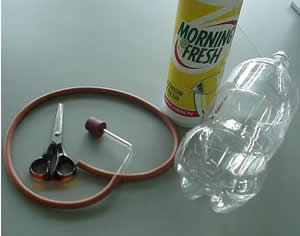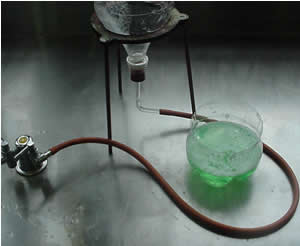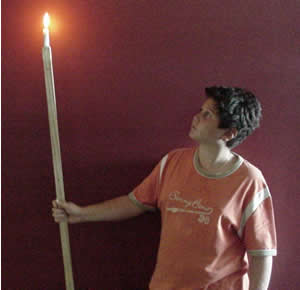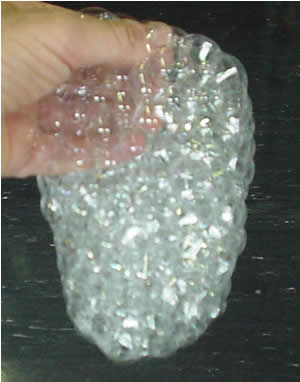Methane reacts with oxygen according to the chemical equation below.
CH4(g) + 2O2(g) => CO2(g) + 2H2O(l)
When methane burns in oxygen, chemical energy is quickly converted into light and heat. Reactions that release energy are called exothermic reactions. This is a great demonstration when studying gases in junior science or exothermic reactions in senior chemistry.
Equipment:
- two litre plastic bottle
- scissors
- 40cm rubber tubing
- 15 cm glass tubing
- rubber stopper
- dishwashing detergent
- tripod
- a 1m broom handle
- small candle.




Questions
Give two properties of methane
gas as observed from the demonstration?
How do you know a chemical reaction took place?
Where did the light and heat energies come from?
Methane is highly flammable and no naked flames must be near the gas source. All steps must be taken to avoid accidental ignition. Gas bubbles should be ignited from a distance and goggles must be worn by those conducting the demonstration. The flames generated may spread beyond the size of the bubbles. No student should be allowed near the demonstration.
|
|